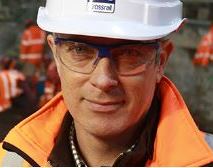This paper focuses on Crossrail as its case study, whilst referencing other projects in the recent experience of the author. It endeavours to put forward some fundamental, some practical and some more complex approaches to managing archaeological risk and maximising benefits from archaeological research and preservation in the context of a large infrastructure project. Increasingly, the lessons learnt from major infrastructure projects across the world and the resulting changes to practice are being adopted within the infrastructure planning and development sector.
The paper was part of the journals’ Forum series. The Forum provides an arena to stimulate debate or deeper reflection on key issues of our discipline. The contributors are normally established professionals who review crucial aspects of archaeological theory, practice and ethics, often presenting opposing views on controversial matters. 10 responses to this paper can be found on the journal website. Together the resulting papers accumulate a picture of how archaeology and mega-projects can progress within a mutually beneficial arena where knowledge and study of the past helps create new sustainable development, and where professional archaeologists are able to take an equal place at the negotiating table in order to achieve balanced outcomes for the historic environment as a whole.
This paper was published in ‘Papers of the Institute of Archaeology’ and can be accessed here.

